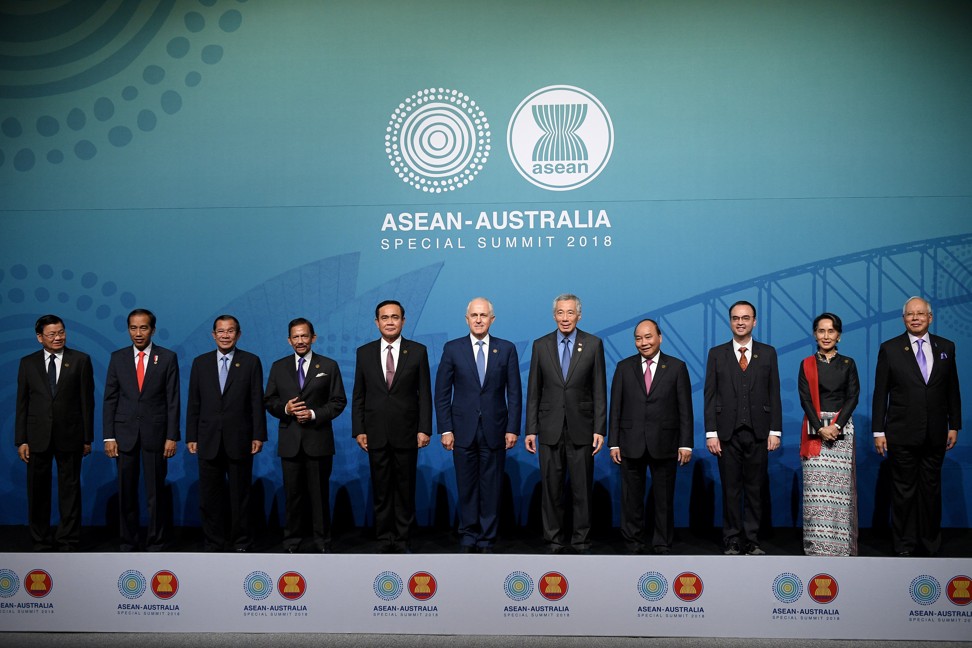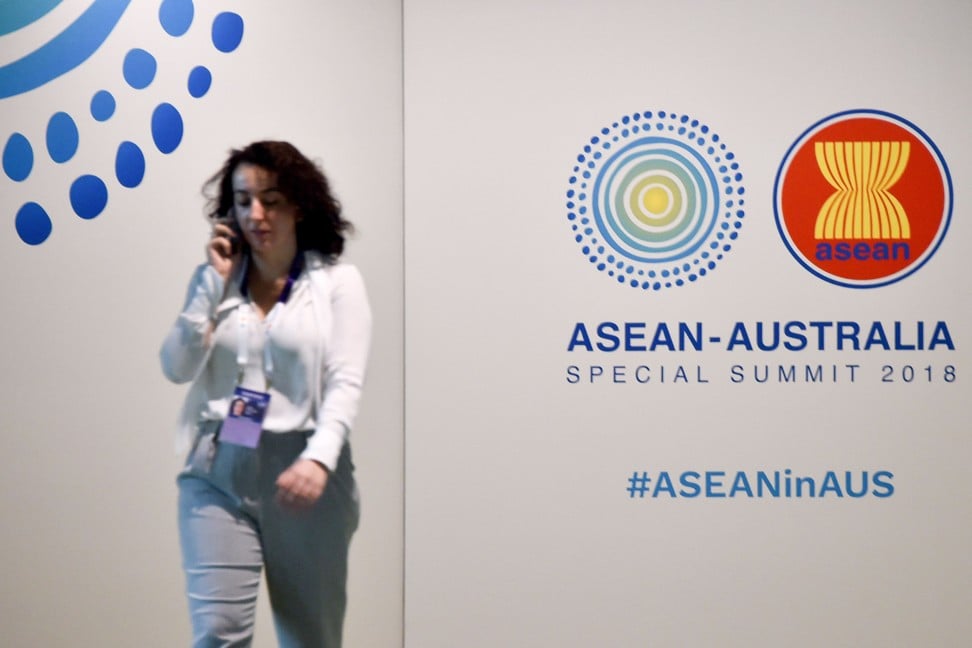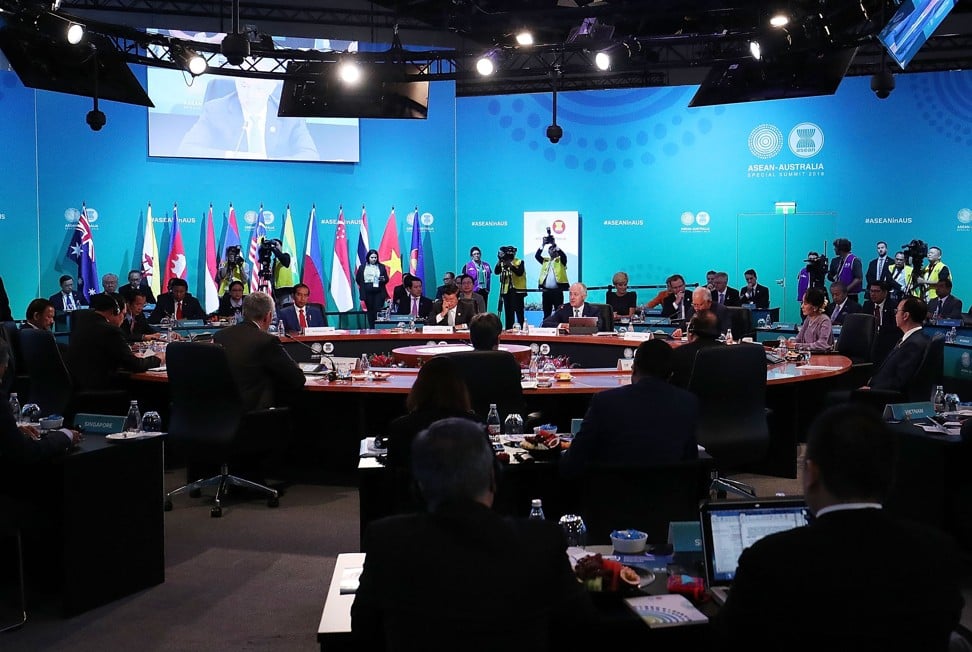
Is Australia set to join Asean as China’s assertiveness grows?
The blossoming relationship between Canberra and its Southeast Asian neighbours is driven by shared geopolitical fears and economic greed, Richard Heydarian writes

The Association of Southeast Asian Nations (Asean) and Australia just concluded their first-ever special summit in Sydney. The high-profile event, which saw the participation of 10 heads of state and government, marked the increasingly warm relations between the largely Western nation and its Asian neighbours to the north.
In many ways, Australia was late to the party, as the United States and India held similar events earlier, even if Canberra was Asean’s first dialogue partner more than four decades ago.
Former American President Barack Obama held an intimate summit in Sunnylands, California, with Southeast Asian leaders towards the end of his term, while Indian Prime Minister Narendra Modi hosted a similar gathering during India’s national independence day in January this year.
However, Australia reaffirmed its status as a new force in the regional pecking order by managing to bring together almost all Southeast Asian leaders at the three-day summit, which ended on March 18, with the notable exception of Philippine President Rodrigo Duterte, who has shown little interest in visiting any Western nation.
In the past, Australia’s relations with Southeast Asia were hobbled by disagreements over immigration and human rights issues, a perennial fault line in Canberra’s ties with Jakarta throughout the 20th century. Today, however, it’s a very different story.
The blossoming Australia-Asean relationship is driven by shared geopolitical fears as well as economic greed. The two middle powers hope to join forces amid America’s protectionist turn, China’s rising assertiveness, as well as the spread of transnational terror throughout East Asia.
Against this backdrop, Indonesian President Joko Widodo went so far during the summit as to openly endorse Australia’s “full membership” of Asean. A delighted Australia responded in kind, stating that it will take the proposal, assuming other Asean states are on board, “very seriously”.
Prominent figures from both conservative and liberal camps in Australia have expressed support for the idea, though to be fair, it didn’t spring out of thin air. Australia’s former Prime Minister Paul Keating and Singapore’s former Permanent Secretary of Foreign Affairs Kishore Mahbubani have been among the most vocal supporters of an upgraded Australia-Asean partnership.
On one hand, there is a sense of urgency to initiate such conversations sooner rather than later. Australia is worried about the prospect of being left out as the only Western nation, along with New Zealand, in the Asian century. In the coming decades, Indonesia, the Philippines and Vietnam are expected to eclipse Australia’s economic and geopolitical heft by their sheer demographic momentum and rapid growth rates.
Today, Australia stands, almost on an equal footing, as a strategic partner with Asean. That won’t be the case in a decade or so. Thus, Australia wants to initiate a conversation on deeper bilateral partnership while it’s in a relatively ascendant position vis-à-vis its less developed Southeast Asian neighbours. This could come either in the form of associate membership in the coming decade and, potentially, full membership down the road.
Despite Australia’s historical ties to Europe, and security alliance with the US, it has increasingly shown a degree of independence in its increasingly Asian-oriented foreign policy.
Canberra has welcomed deeper economic engagement with its broader Asian neighbourhood, and expanded counterterror and non-traditional security cooperation with Southeast Asian nations, and has openly opposed America’s protectionist policies under the Donald Trump administration.
As Australian Prime Minister Malcolm Turnbull said during the summit: “Protectionism is a dead end … Embrace free trade, not retreat from it.”
Canberra also believes in deeper engagement with Asean to keep China’s maritime ambitions in check.
It has consistently encouraged the Philippines to assert its landmark arbitration award in the South China Sea, while supporting Indonesia’s proposal for joint patrols in disputed areas. In the joint Australia-Asean statement, the so-called Sydney Declaration, both sides called for the “early conclusion of an effective” Code of Conduct in the South China Sea.
Yet, crucially Australia has repeatedly refused to join America’s call for joint Freedom of Navigation Operations in the area to preserve stable relations with Beijing.
Worried by the spread of extremism in Southeast Asia, both sides signed the Memorandum of Understanding between the Association of Southeast Asian Nations and the Government of Australia on Cooperation to Counter International Terrorism. This could pave the way for institutionalised intelligence-sharing, high-grade equipment transfer, and joint counterterrorism training between Canberra and its geographically proximate neighbours of Indonesia and the Philippines.
For Asean, the inclusion of developed countries such as Australia could help enhance the dynamism and geo-economic weight of the regional body. Canberra could serve, for instance, as a major source of financial and human resources for the development of Asean’s skeletal secretariat.
Economics is another cornerstone of the booming relationship. Two-way investment flows hit US$225 billion in 2016, while trade volume reached close to US$100 billion in recent years. Both sides hope to boost their economic engagement through the Asean-Australia-New Zealand Free Trade Agreement, the Comprehensive and Progressive Agreement for Trans-Pacific Partnership, and the proposed Regional Comprehensive Economic Partnership.
Ultimately, the two middle powers believe they will either have to hang together or risk getting hung apart by bigger powers, particularly China and the United States. Together, they hope to shepherd the region towards a more inclusive, open and multipolar security architecture in the Asia-Pacific theatre. Uncertain times call for unthinkable reforms, and Australia’s proposed membership of Asean is a perfect example of this.

